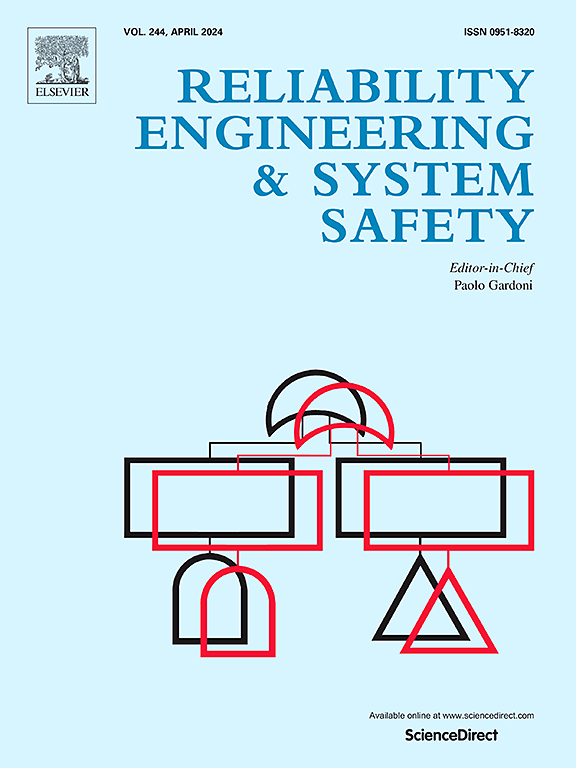Adaptive proposal length scale in Subset Simulation
IF 9.4
1区 工程技术
Q1 ENGINEERING, INDUSTRIAL
引用次数: 0
Abstract
Subset Simulation (SS) is a Monte Carlo method for estimating the failure probability of a system whose response is a ‘black box’, for which little or no prior information is available for variance reduction. Pivotal to SS is an efficient mechanism for generating candidates that are accepted/rejected by Markov Chain Monte Carlo (MCMC) to produce an unbiased estimate. In the standard Normal space, conditional sampling scheme offers an elegant means for generating candidates, reducing the choice of proposal distribution in MCMC to a correlation parameter. Recent developments feature adaptive schemes to achieve some target acceptance rate. For a generic 1-D linear problem, this work obtains analytically the optimal correlation parameter that minimises the lag-1 correlation of samples in a simulation level of SS. Despite the 1-D linear origin, numerical investigations reveal that the resulting adaptive scheme shows promise for effectively suppressing the systematic growth of candidate rejection and correlation along Markov chains for problems of wider context, e.g., with nonlinearity, high dimensions and multiple failure modes. The adaptive scheme exhibits robustness for coping with complex problems where it is difficult to generate failure samples, although efficiency gain in variance reduction may be offset by increased correlation suspectedly between simulation levels. The analytical results derived in this work provide insights on how proposal PDFs should be scaled to cope with rare events.
子集仿真中的自适应提案长度尺度
子集模拟(SS)是一种蒙特卡罗方法,用于估计系统的故障概率,该系统的响应是一个“黑箱”,其中很少或没有可用的先验信息用于减少方差。SS的关键是生成候选项的有效机制,这些候选项被马尔可夫链蒙特卡罗(MCMC)接受/拒绝,以产生无偏估计。在标准正态空间中,条件抽样方案提供了一种优雅的方法来生成候选项,将MCMC中建议分布的选择减少到一个相关参数。最近的发展以自适应方案为特征,以达到某些目标接受率。对于一个一般的一维线性问题,本工作解析地获得了最优相关参数,该参数在SS的模拟水平上最小化了样本的滞后-1相关性。尽管存在一维线性起源,但数值研究表明,所得到的自适应方案显示出对更广泛背景下的问题(例如非线性、高维和多种失效模式)有效抑制候选拒绝和马尔可夫链相关的系统增长的希望。自适应方案在处理难以生成失效样本的复杂问题时表现出鲁棒性,尽管在方差减少方面的效率增益可能被模拟水平之间可疑的相关性增加所抵消。在这项工作中得出的分析结果为提案pdf应该如何缩放以应对罕见事件提供了见解。
本文章由计算机程序翻译,如有差异,请以英文原文为准。
求助全文
约1分钟内获得全文
求助全文
来源期刊

Reliability Engineering & System Safety
管理科学-工程:工业
CiteScore
15.20
自引率
39.50%
发文量
621
审稿时长
67 days
期刊介绍:
Elsevier publishes Reliability Engineering & System Safety in association with the European Safety and Reliability Association and the Safety Engineering and Risk Analysis Division. The international journal is devoted to developing and applying methods to enhance the safety and reliability of complex technological systems, like nuclear power plants, chemical plants, hazardous waste facilities, space systems, offshore and maritime systems, transportation systems, constructed infrastructure, and manufacturing plants. The journal normally publishes only articles that involve the analysis of substantive problems related to the reliability of complex systems or present techniques and/or theoretical results that have a discernable relationship to the solution of such problems. An important aim is to balance academic material and practical applications.
 求助内容:
求助内容: 应助结果提醒方式:
应助结果提醒方式:


